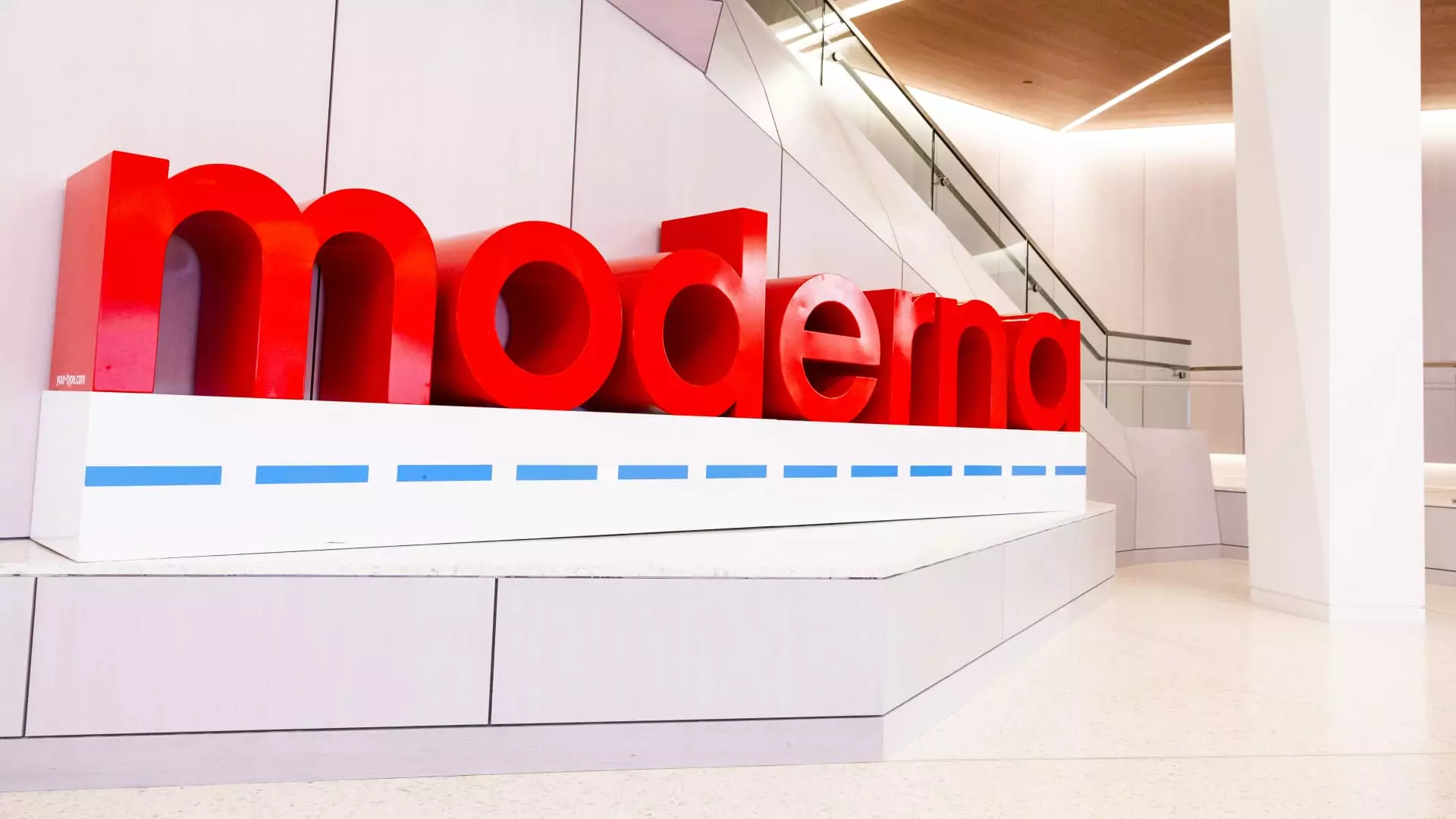Moderna, the biotech company that rose to prominence with its groundbreaking COVID-19 vaccine, is now at a pivotal juncture. With its fourth-quarter performance revealing both opportunities and challenges, the company faces pressing difficulties as it seeks to evolve beyond the pandemic’s shadow. As the demand for its COVID-19 vaccine diminishes, Moderna is pivoting its strategy to sustain growth and innovate through new product launches. This article delves into Moderna’s recent financial results, competitive landscape, and strategic outlook as it strives to regain momentum.
In its latest earnings report, Moderna revealed a net loss of $1.12 billion for the fourth quarter of 2024, equating to a staggering $2.91 per share. This represents a sharp contrast to the net income of $217 million, or 55 cents per share, recorded in the previous year. Such numbers raise eyebrows, especially considering Moderna’s once-stellar performance during the pandemic. Analysts had anticipated a loss, but Moderna’s figures exceeded their expectations, indicating that the company is grappling with deeper financial issues than previously thought.
The revenue for this quarter hit $966 million, slightly above analysts’ projections but less than half of the $2.8 billion reported during the same quarter last year. The company’s COVID-19 shot still dominates sales, accounting for $923 million of this quarter’s revenue, a staggering 66% drop year-over-year. A significant factor in these declining numbers was attributed to a strategic shift; the FDA approved the latest version of Moderna’s vaccine earlier than anticipated last year, leading to a premature sales surge that denied the end of year revenue that previously bolstered results.
Moderna’s Chief Financial Officer, Jamey Mock, highlighted that the company managed to reduce costs by 27% from 2023 levels, stating that by the end of 2025, they anticipate cutting costs by a total of $1 billion. However, while cost-cutting can ensure short-term fiscal survival, excessive frugality can hamper long-term innovation and growth efforts. With the biotech landscape becoming increasingly competitive, aggressively scaling back could endanger Moderna’s R&D capabilities, which are critical for the development of new mRNA-based treatments.
While the company may be trying to sharpen its edge through cost containment, investors remain anxious as the company tries to navigate through archaic systems inherited from its COVID success. Recent sales projections signal a somber reality for 2025, estimating product sales to fall between $1.5 billion and $2.5 billion, much lower than the previous guidance. Such cautionary estimates directly impact investor confidence and, subsequently, share prices, which took a significant hit following recent announcements.
As it moves forward, Moderna must contend with a rapidly evolving market landscape. The COVID-19 vaccine sector is becoming crowded, with numerous competitors vying for market share. Increased vaccination choices and deteriorating rates of public enthusiasm will undoubtedly pose significant risks to Moderna’s revenue stream. Additionally, uncertainties surrounding federal recommendations pertaining to revaccination for respiratory syncytial virus (RSV) shots introduce further ambiguity.
These dynamics raise a critical question: can Moderna diversify sufficiently to offset declines in its COVID-19 vaccine income? The company is banking on its messenger RNA technology for new products, including vaccines targeting the flu, RSV, and even personalized cancer therapies. The excitement surrounding these developments might attract investors hoping for a rebound. However, any missteps in execution can exacerbate existing vulnerabilities.
Moderna is acutely aware of its current predicament and is taking pivotal steps to address it. By submitting three mRNA products for approval, including next-generation vaccines and a combination flu-COVID shot, the company is reorienting its focus towards broader health concerns. Anticipated decisions from the FDA could serve as catalysts for revitalization, potentially ushering in a period of renewed investor enthusiasm if successful.
Furthermore, with an insight-driven push to expand its portfolio over the next three years, Moderna is keen to recover its growth trajectory. Success will depend not only on product viability but also on the company’s agility in adapting to changing market conditions.
Moderna stands at an intersection between past triumphs and potential future challenges. The company must leverage its innovative capabilities while carefully managing financial constraints to navigate the post-COVID era. While the road ahead is laden with uncertainties, its commitment to refreshing its product pipeline and exploring new avenues within biotechnology is a testament to its resilience. How effectively Moderna maneuver this transition will ultimately determine the sustainability of its legacy in the ever-dynamic biotech landscape.

